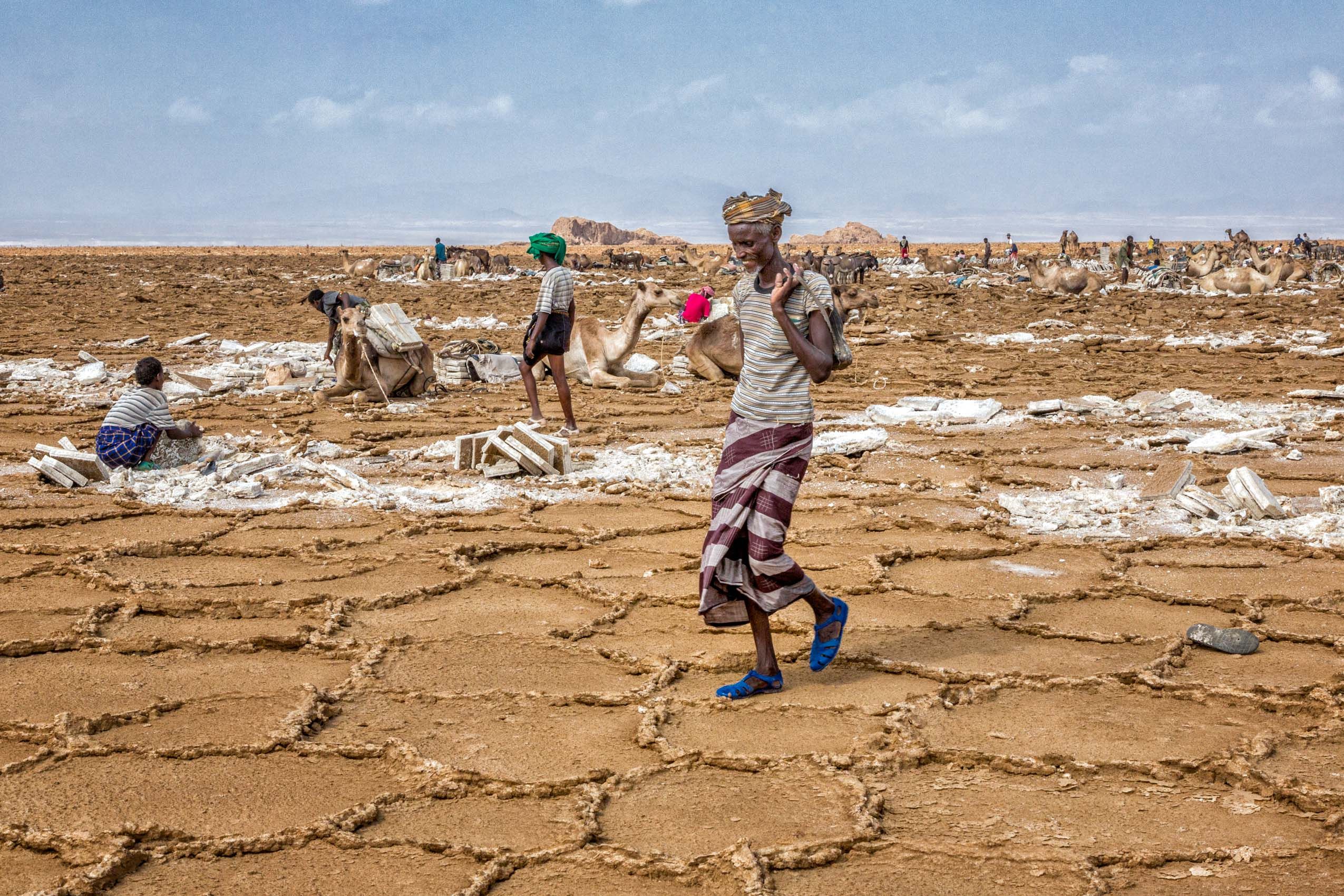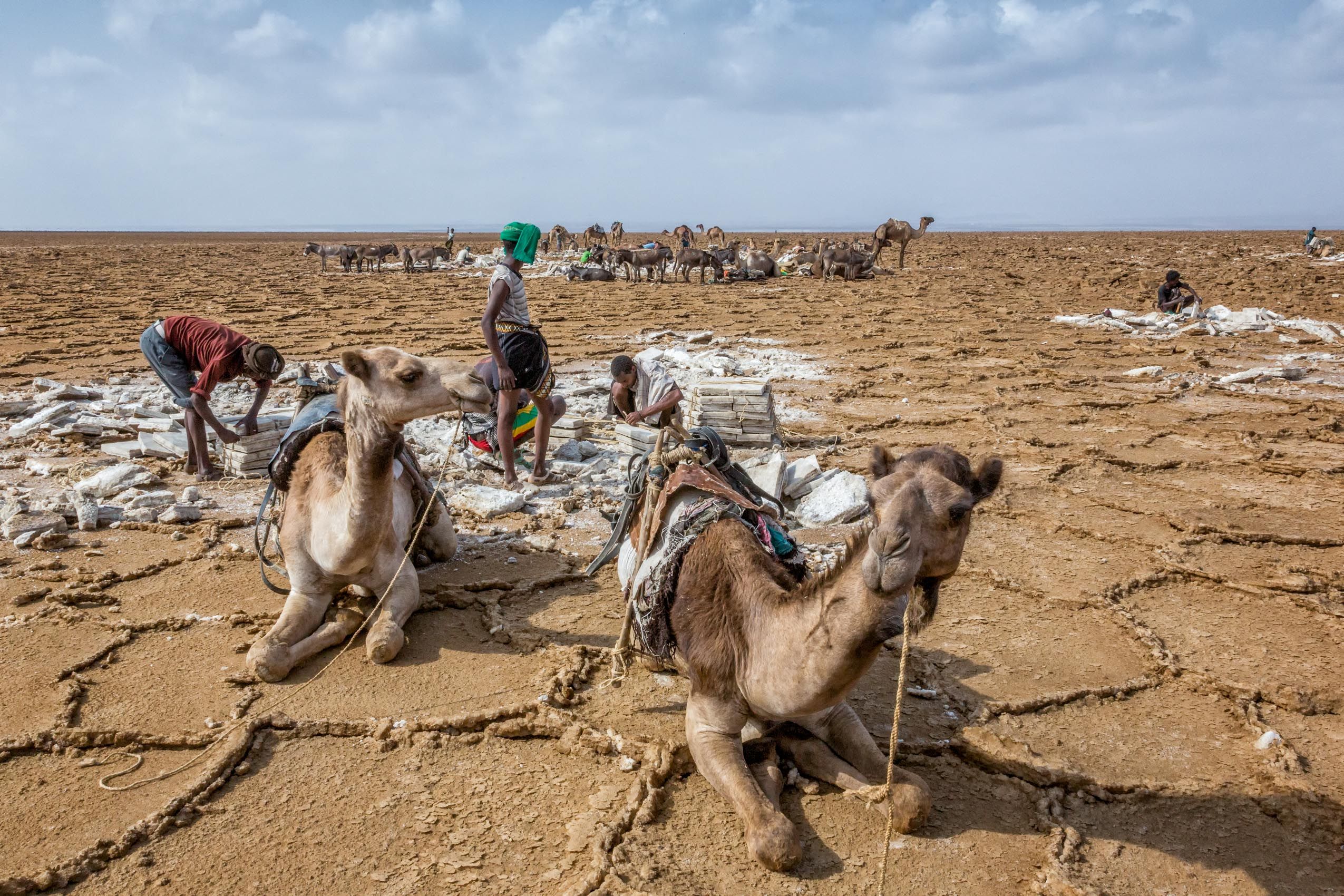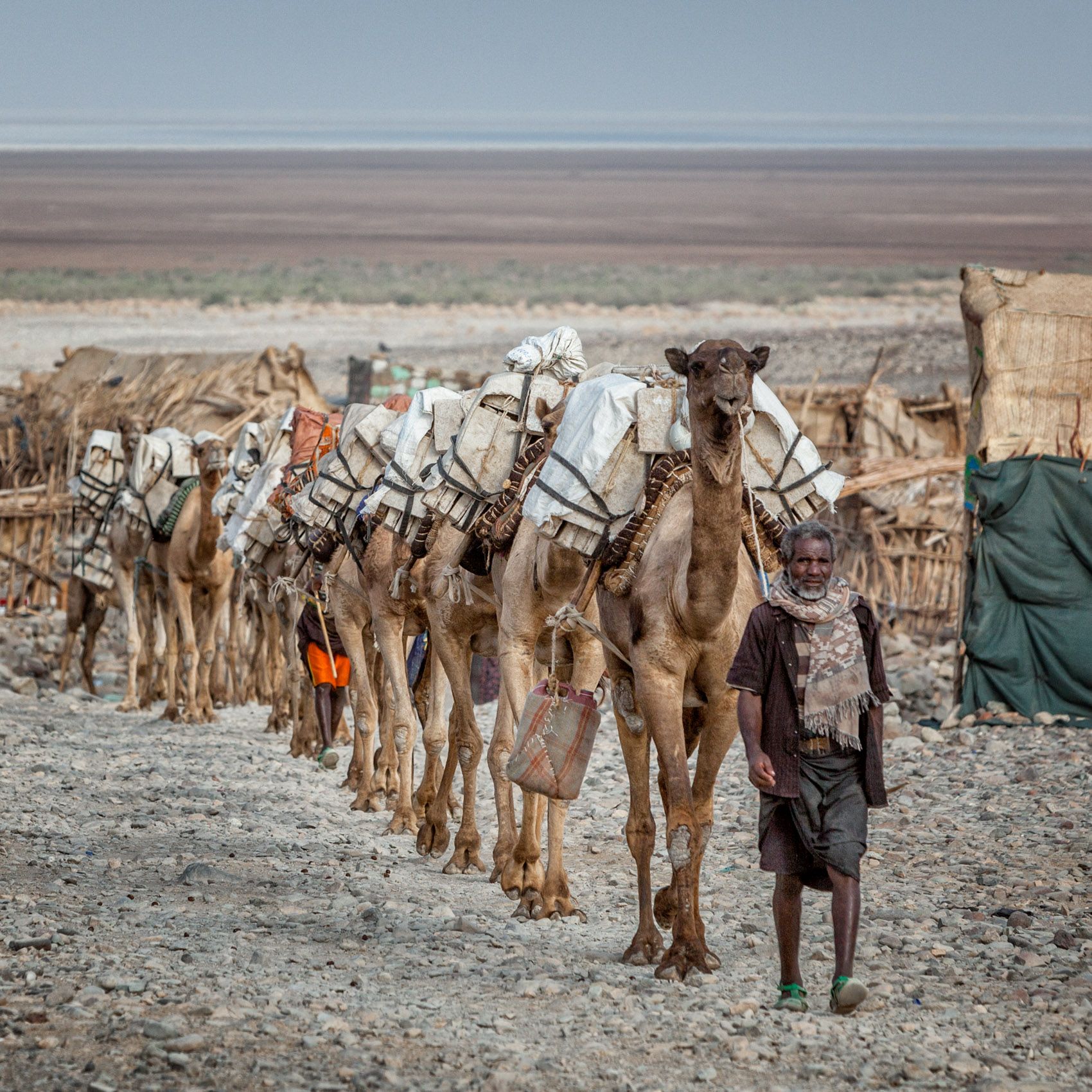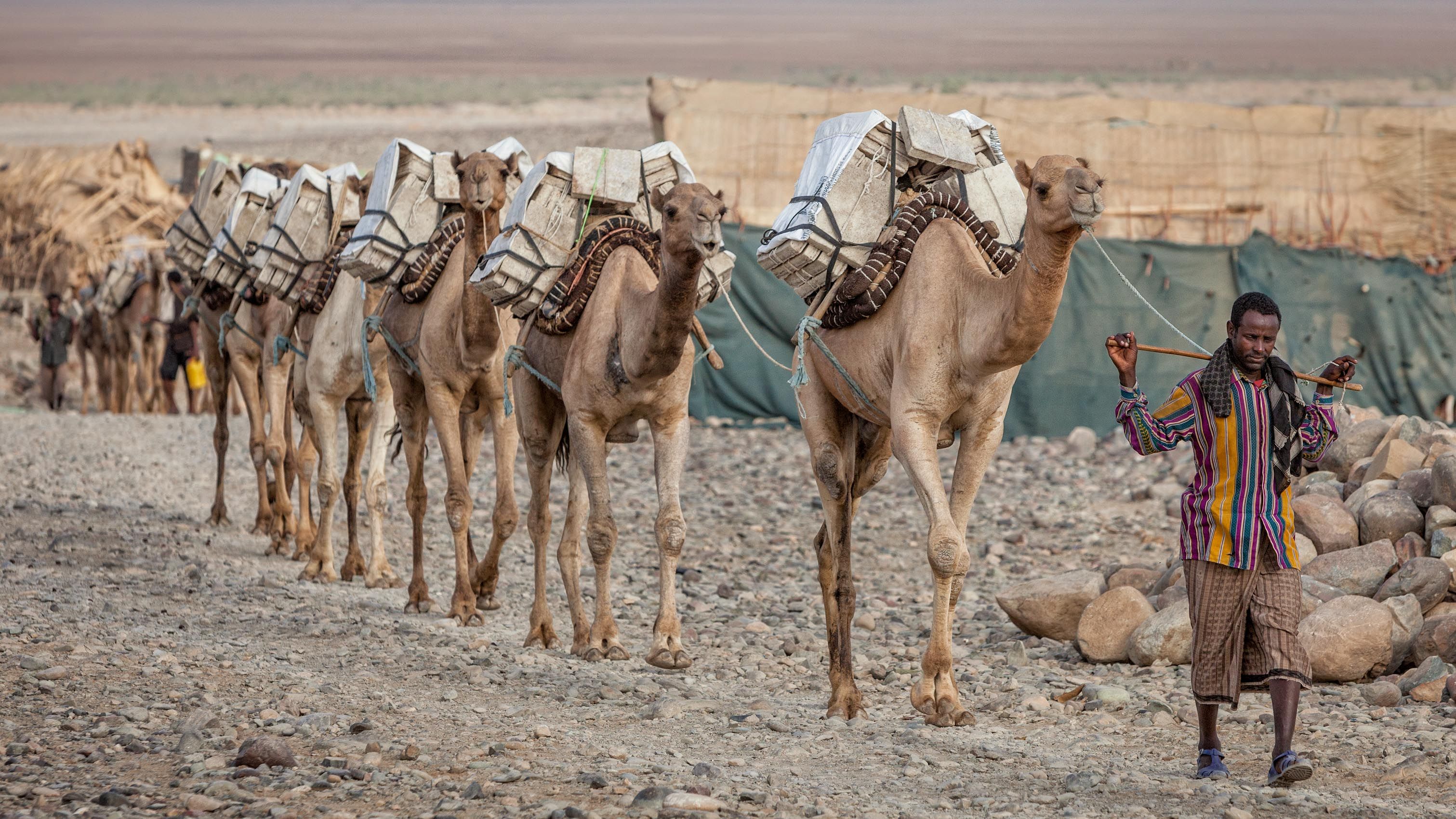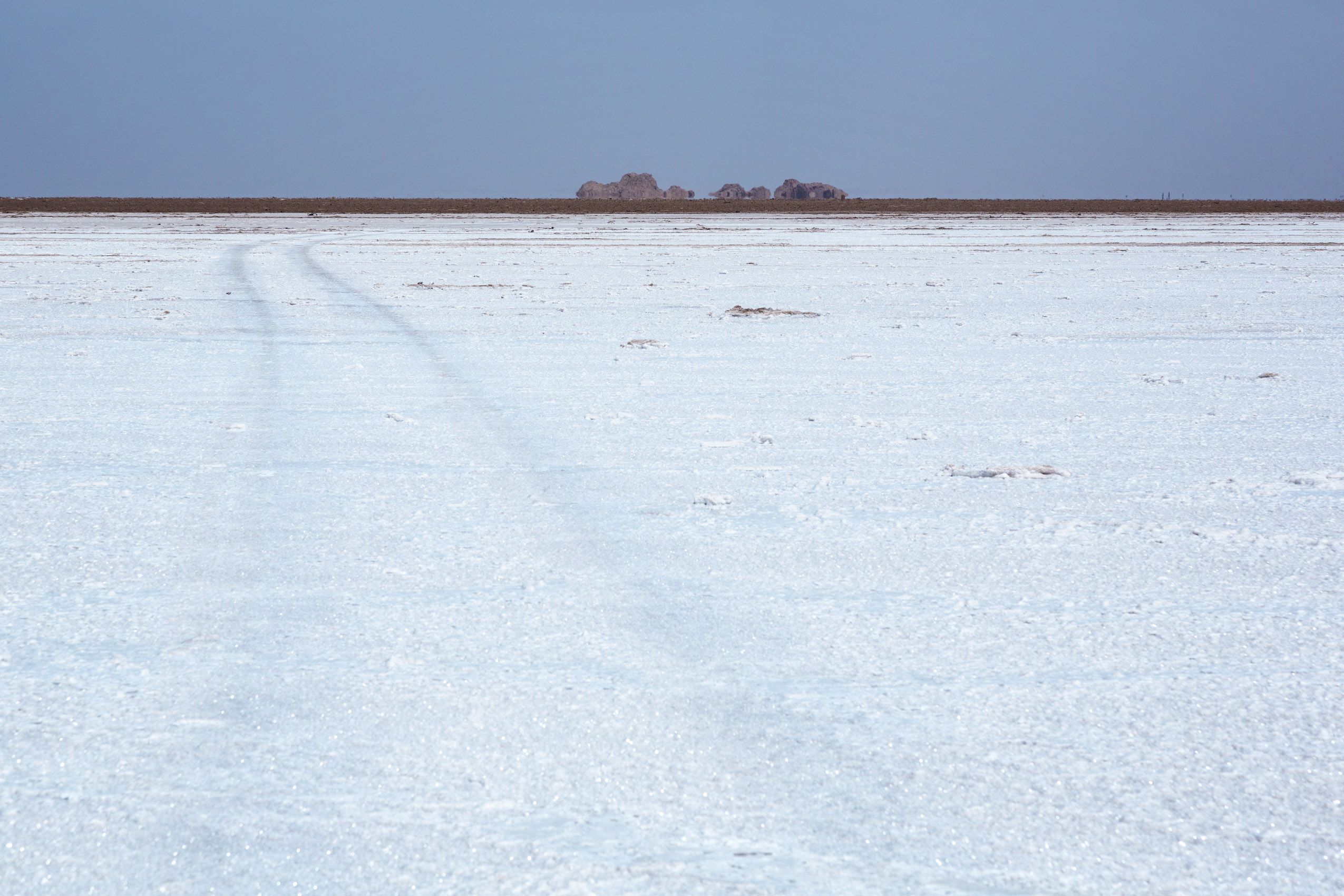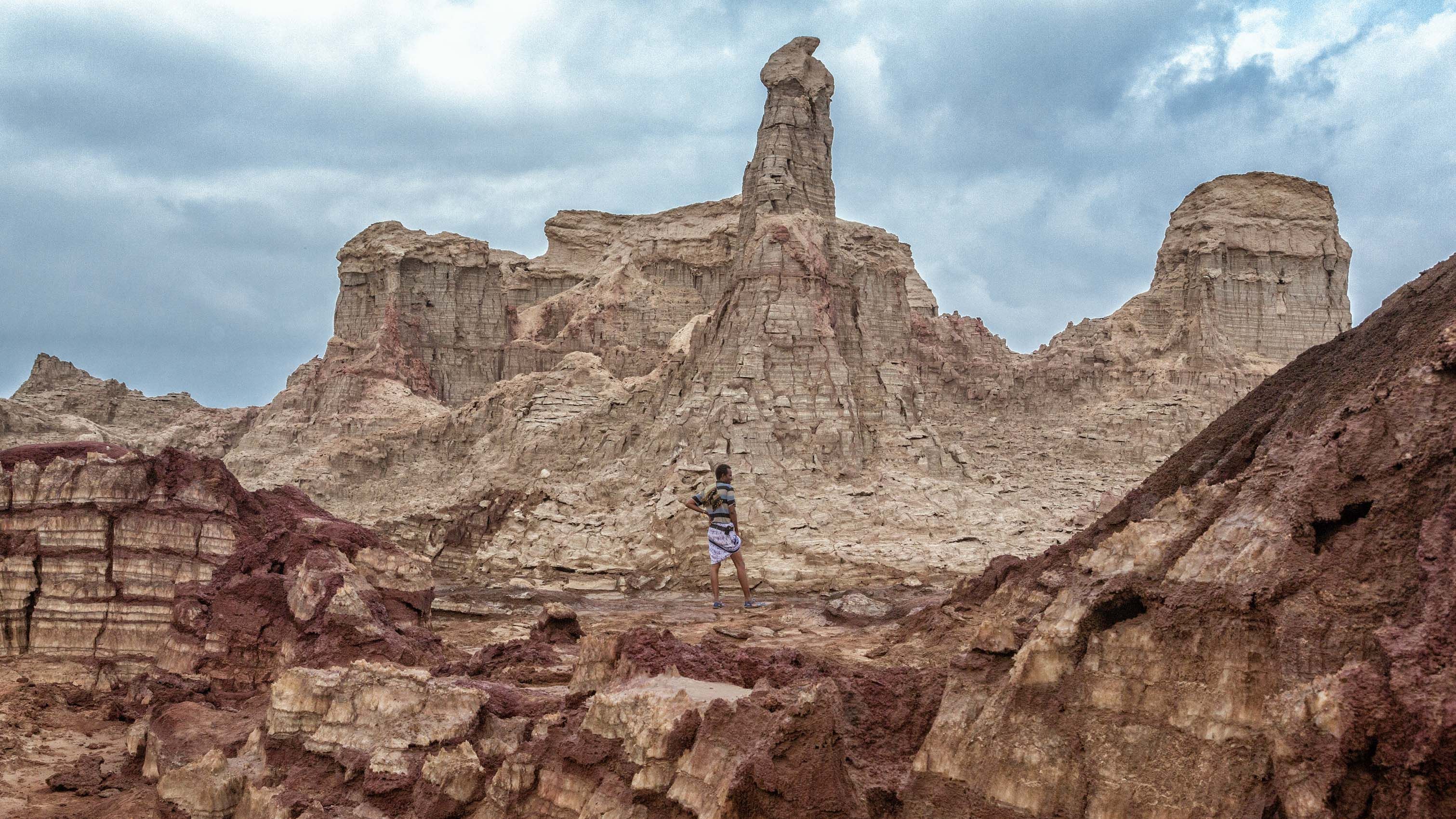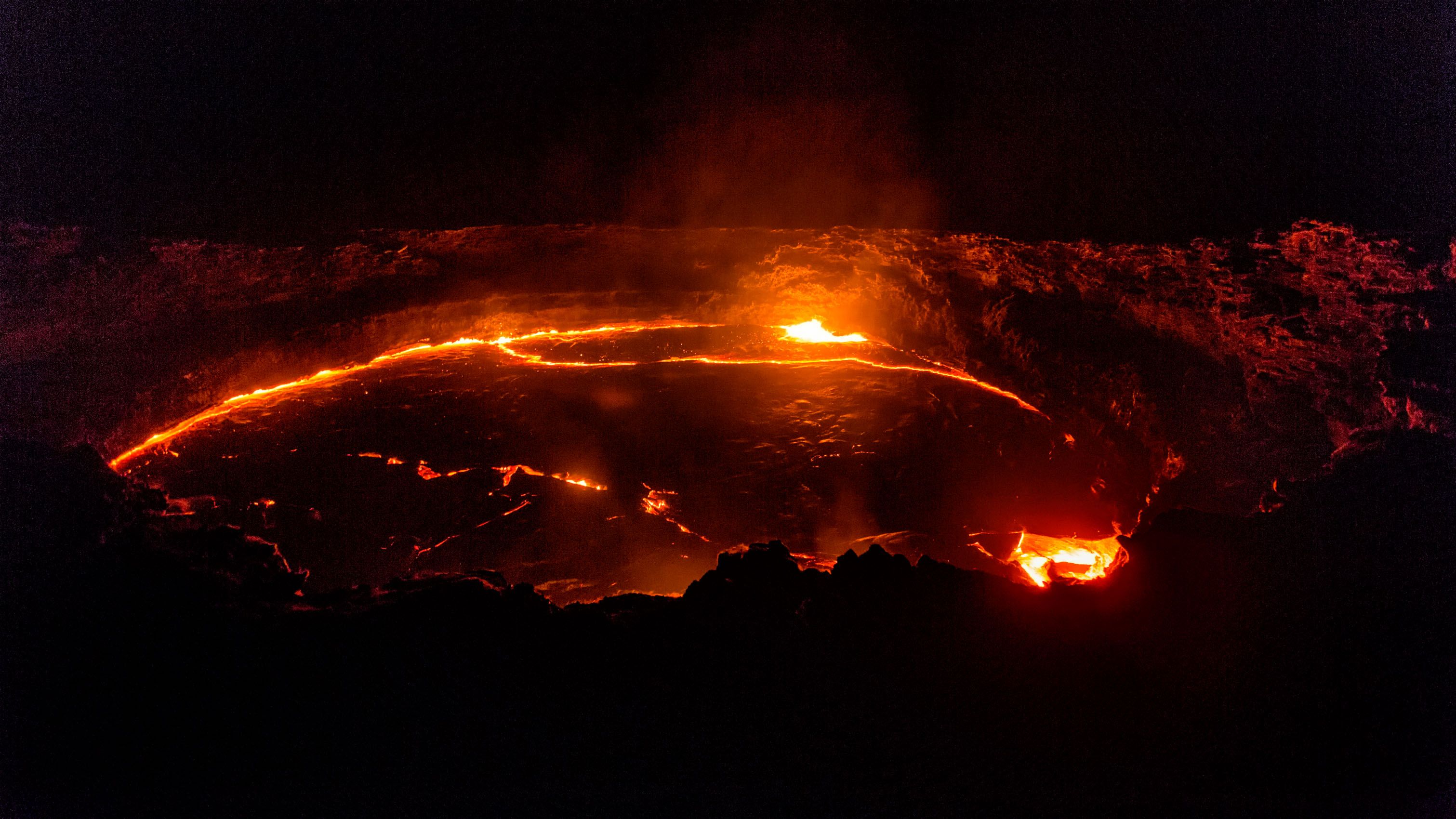ETHIOPIA: Into the Afar
The fortuitously well named Afar region of north central Ethiopia, bordering Eritrea, is one of the least accessible and most sparsely populated areas of the African continent. The Danakil or Afar depression in its north—at the intersection of three tectonic plates—is one of the most volcanically and seismically active areas on the earth, as well as one of the lowest, hottest, and most mineral rich. The region is part of the Great Rift Valley, and some of the oldest and most significant hominid fossil remains have been found here. The dominant ethnic group now are the predominantly Muslim Afar, who until less than a century ago were extremely hostile to outsiders. In recent years, ongoing hostilities between Ethiopia and Eritrea have added to the potential risks of travel to the area, several tourists having been killed in the vicinity of Erta Ale volcano the year before I went there. Travel to the Danakil requires an additional 4x4 vehicle with driver and cook, for backup and transportation of supplies—including all the water and food required for the duration of the trip. In the absence of roads in many areas, local Afar guides must be taken on, as well as armed guards from the Ethiopian military in areas that have seen hostilities. It was under such conditions that I travelled through the Afar region while in Ethiopia during 2013. This portfolio encompasses images of the forbidding and otherwordly landscape, including the spectacular sulfur beds in the Dallol area and the permanent lava lake that seethes and sloshes within the crater of Erta Ale volcano. The other focus is the mining of the vast salt beds of the Danakil Depression and the transportation of that salt, cut into tiles that are tied into stacks and transported by trains of camels and donkeys—a sight that seems to emerge from and then recede into an almost biblical past.













